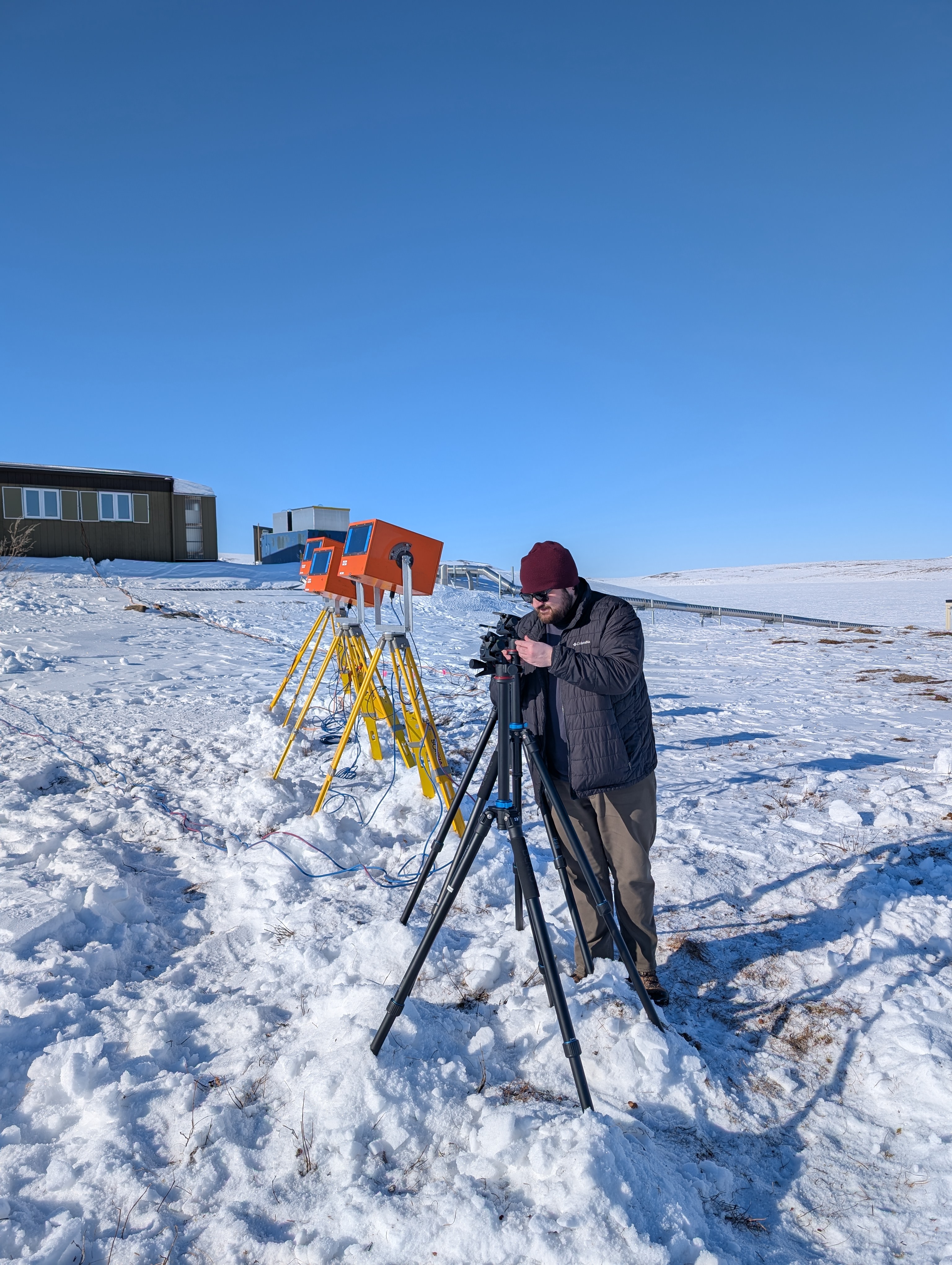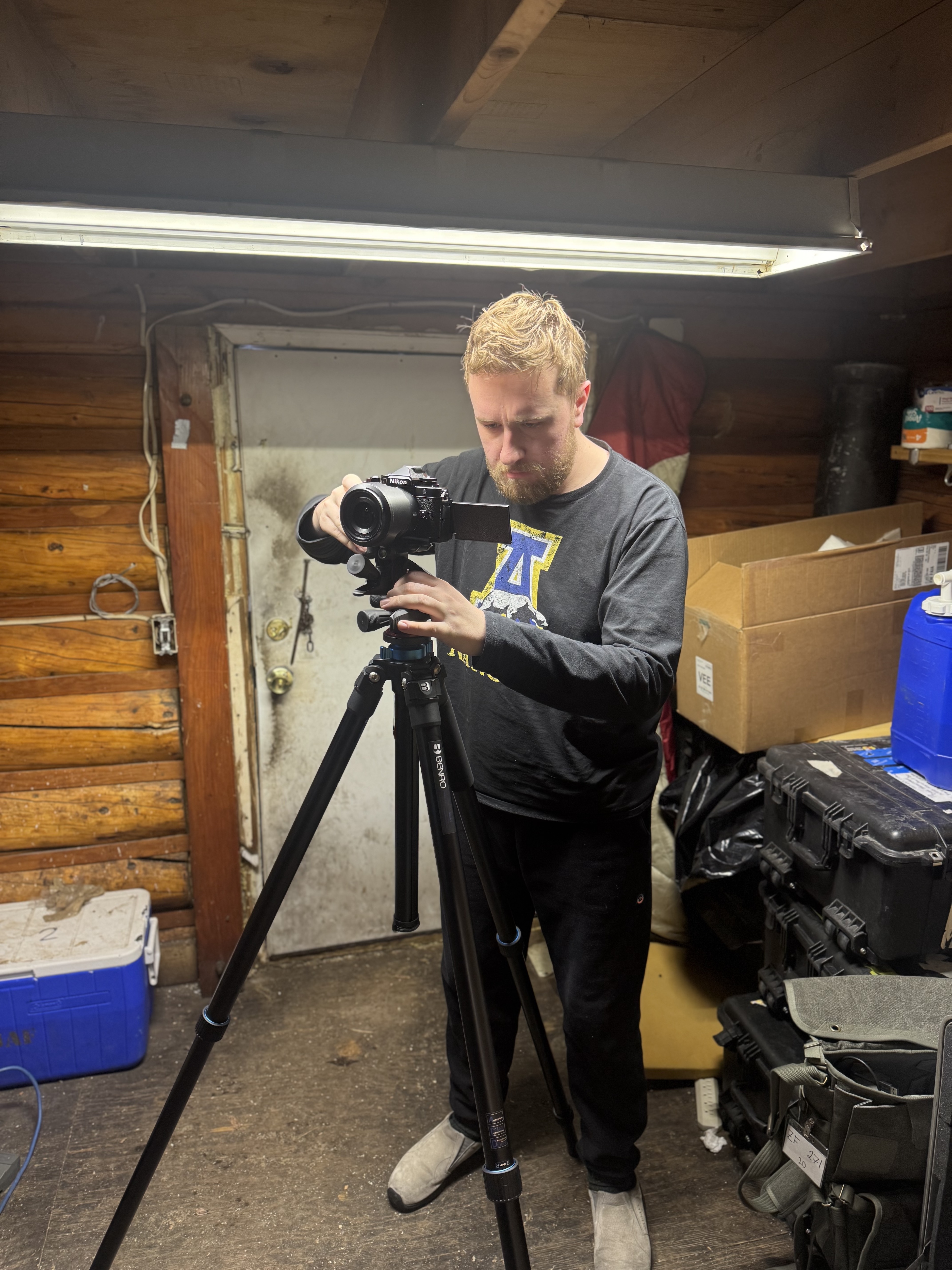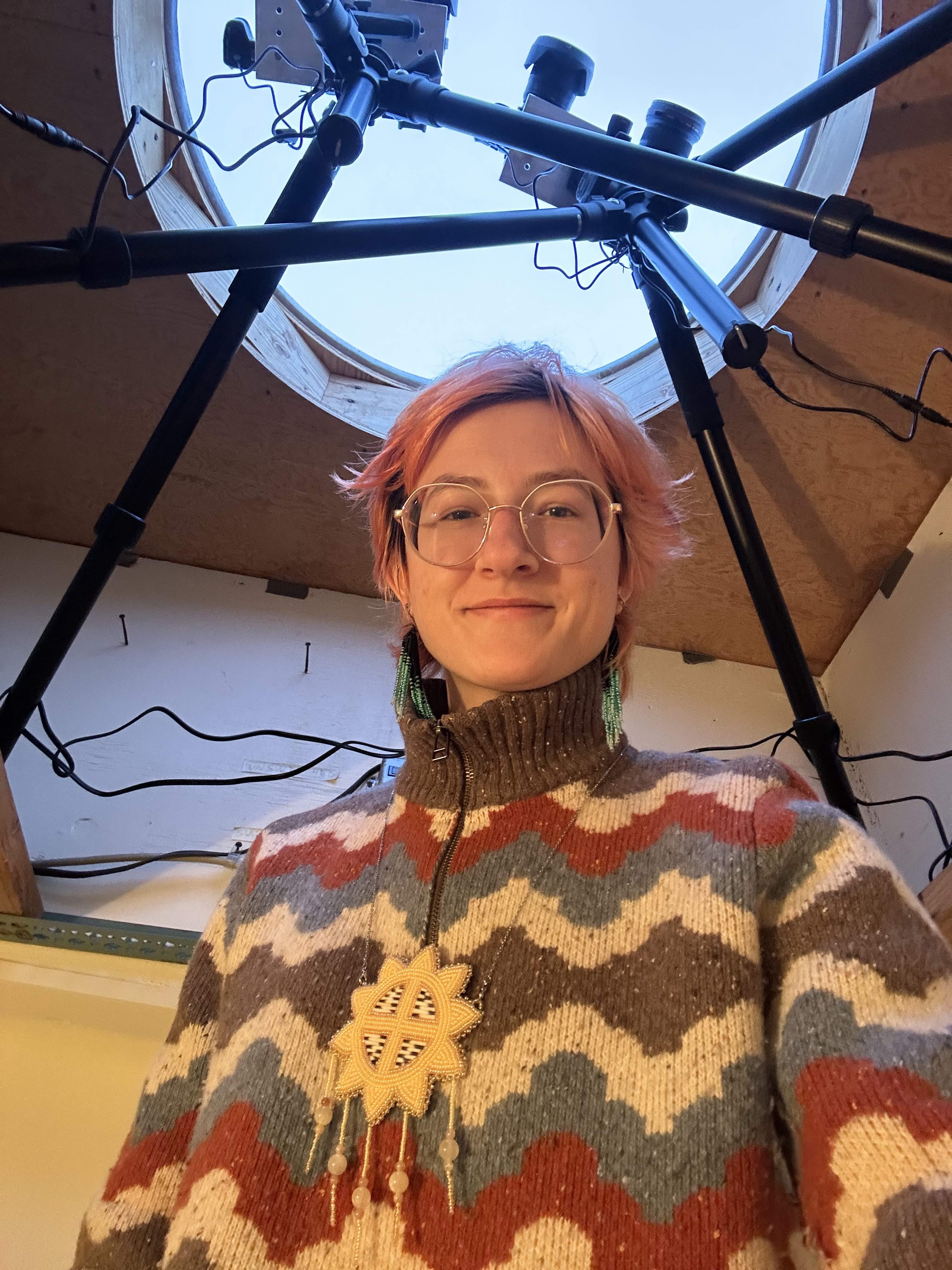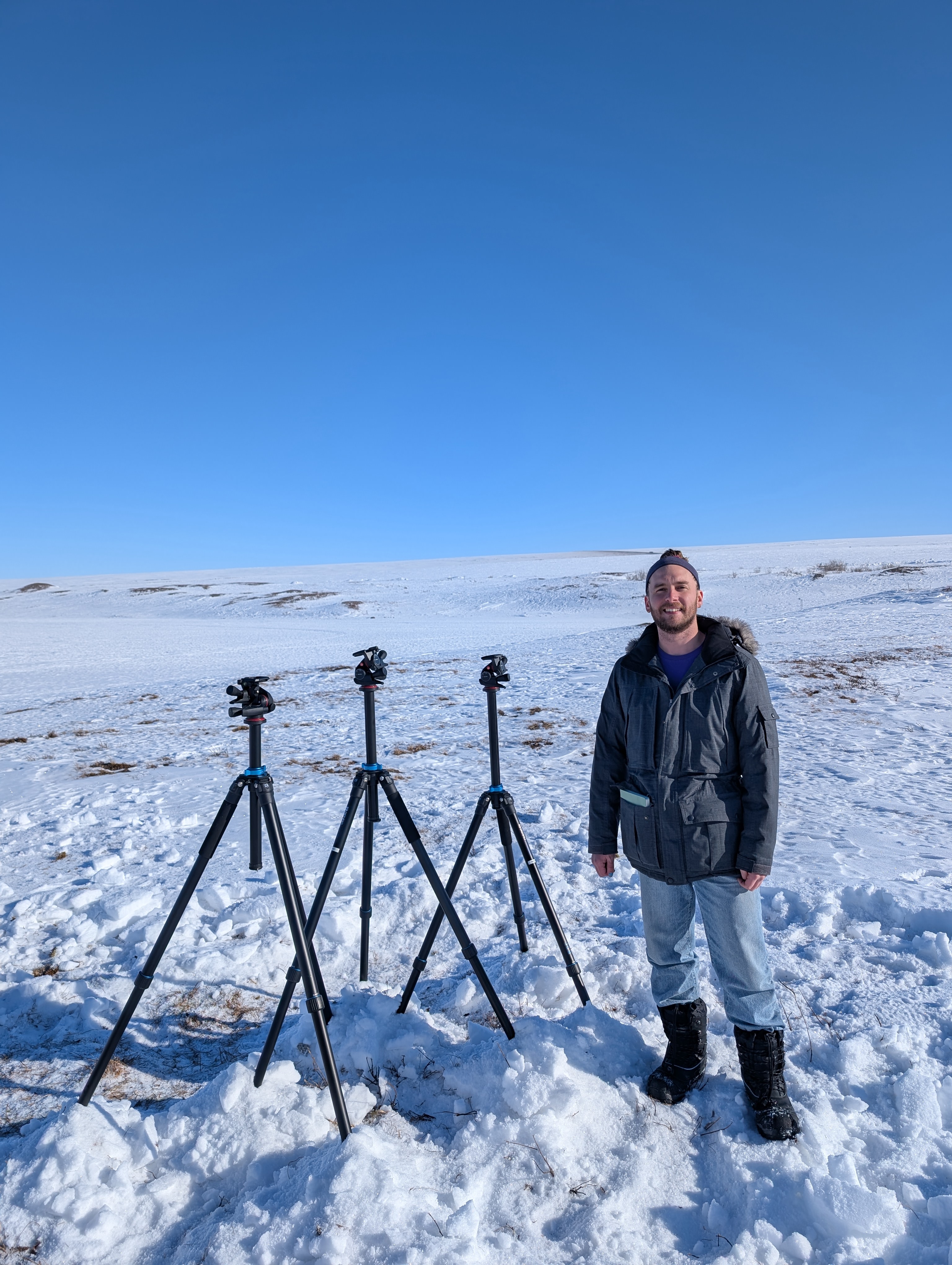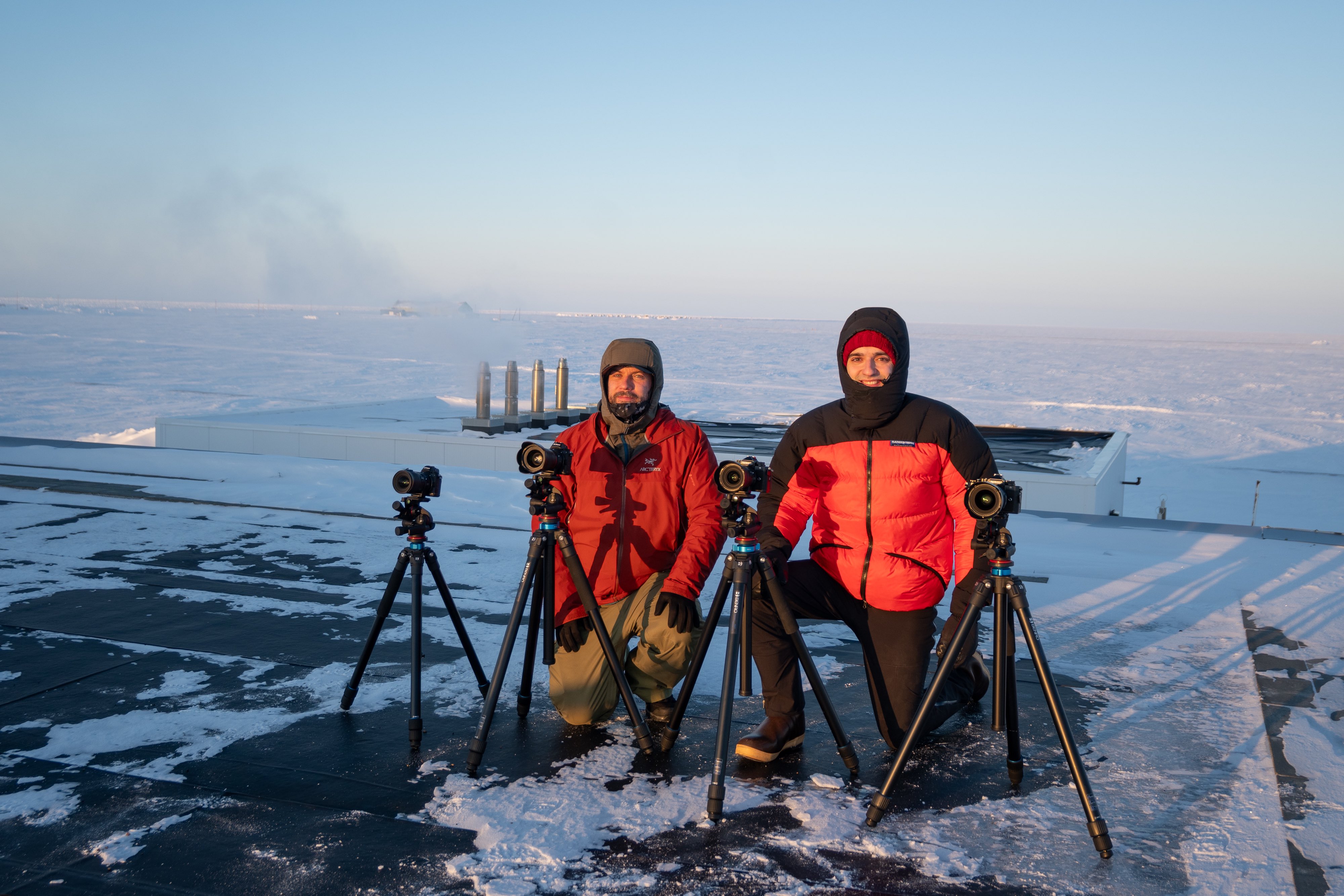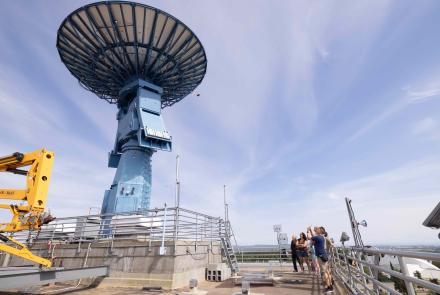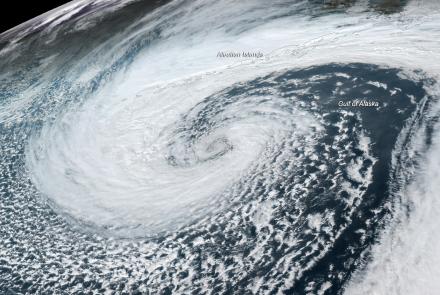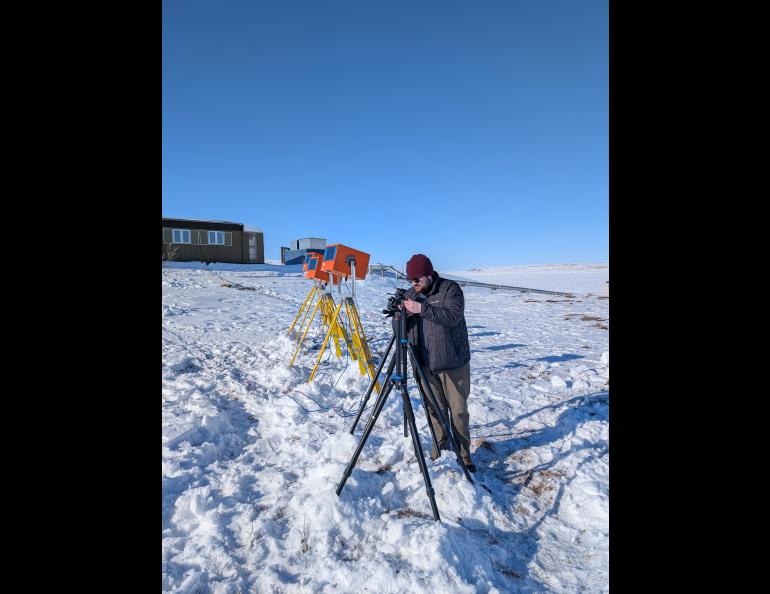
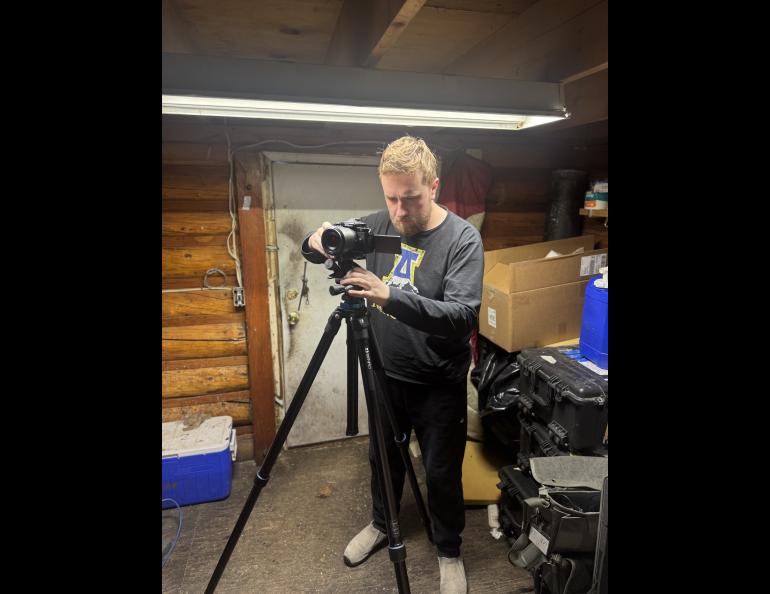

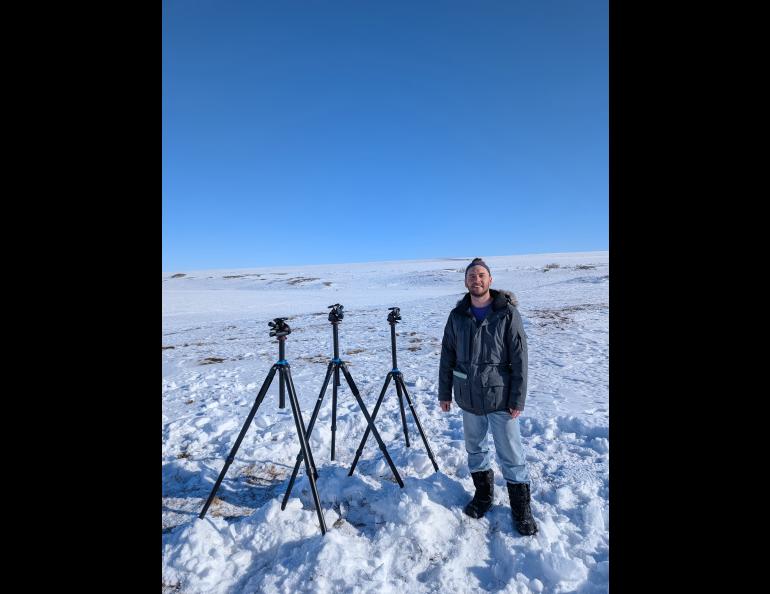
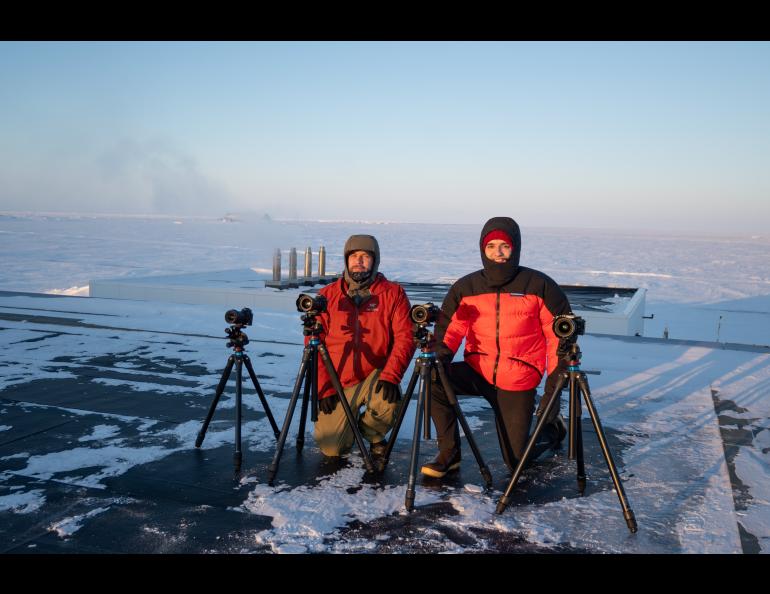


UAF students play key role in the AWESOME rocket mission
Participating in a NASA sounding rocket mission in their geographic backyard is an extraordinary opportunity for student researchers at the University of Alaska Fairbanks Geophysical Institute.
And they eagerly took full advantage of it.
Ten graduate and undergraduate students have been supporting the Auroral Waves Excited by Substorm Onset Magnetic Events, or AWESOME, mission.
“Being a part of this mission is an excellent affirmation of my love for science and fieldwork,” said Michael Martins, a recent UAF graduate who is a research technician on the mission.
“It's easy to drop everything going on in my life and travel 1,000 miles — Fairbanks to Anchorage to Utqiagvik — when I know what lies ahead is a few weeks of problem solving, which I enjoy tremendously,” he said.
AWESOME’s goal is to learn more about how the aurora affects the upper atmosphere. It is led by UAF space physics professor Mark Conde of the Geophysical Institute and UAF College of Natural Science and Mathematics.
Students operated cameras at six ground observation stations: Poker Flat Research Range, where the rockets are launched; and at the central and northern Alaska communities of Venetie, Eagle, Kaktovik and Utqiagvik, and the Toolik Lake Field Station research site. The Geophysical Institute owns Poker Flat and operates it under a contract with NASA.
Images from at least two sites are needed for triangulation so that the location of the dispersed vapor tracers can be pinpointed.
It’s a critical task.
“The responsibility placed on the students was very high for this experiment, which cost many millions of dollars to perform,” Conde said.
To illustrate that weight, Conde notes that clouds blocked the sky view from one of three ground sites whose primary focus was the vapor tracers dispersed by a four-stage rocket over the Arctic Ocean. He couldn’t afford to lose one of the remaining two.
“The whole experiment would be undermined if the camera sites operated by the students didn't work as expected,” Conde said.
Students were up for it.
“It is incredibly exciting to be working on a rocket launch,” said graduate student researcher Chynna Spitler, operating the cameras at Poker Flat. “To be in an environment where everybody is excited for science and getting to see the science happen quite literally in front of your eyes is just a phenomenal experience.”
Undergraduate researcher Vivian Palmer, who worked at the Kaktovik camera station, said being in the field was invaluable.
“As a UAF undergraduate student, I am very excited to be part of the AWESOME team,” Palmer said. “This mission has allowed me to learn beyond what I could have learned in the classroom.”
Palmer is grateful for the opportunity to learn hands-on from Conde and research associate professor Don Hampton and for the experience of “an environment as breathtaking as Qaaktuġvik (Kaktovik), Alaska."
Graduate student researcher Vincent Ledvina, working at the Venetie ground station, said being a part of AWESOME has been a privilege.
“I love the aurora and northern lights, and the research questions AWESOME will be helping to answer are very important for the field of space physics,” he said. “It feels good to be a part of this."
AWESOME is one of many examples of student opportunities in Alaska through UAF.
“Our location in the Arctic is relevant for many areas of science — space physics, biology, glaciology, volcanology, and permafrost studies, for example,” Conde said. “The science we do involves fieldwork across many of our disciplines.”
“By coming to UAF, there are many opportunities for people to go into the field to interesting remote, exotic places that most people don’t get to visit,” he said. “It’s very exciting for the students.”
Learn more about AWESOME, including student participation, at our interactive mission page.
• Mark Conde, University of Alaska Fairbanks Geophysical Institute, 907- 474-7741, mgconde@alaska.edu
• Rod Boyce, University of Alaska Fairbanks Geophysical Institute, 907-474-7185, rcboyce@alaska.edu

